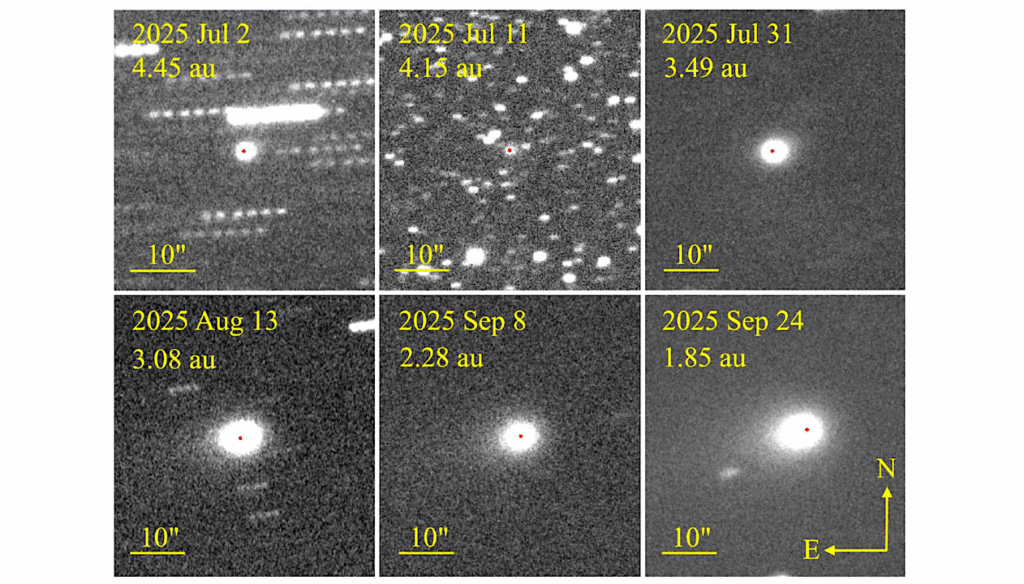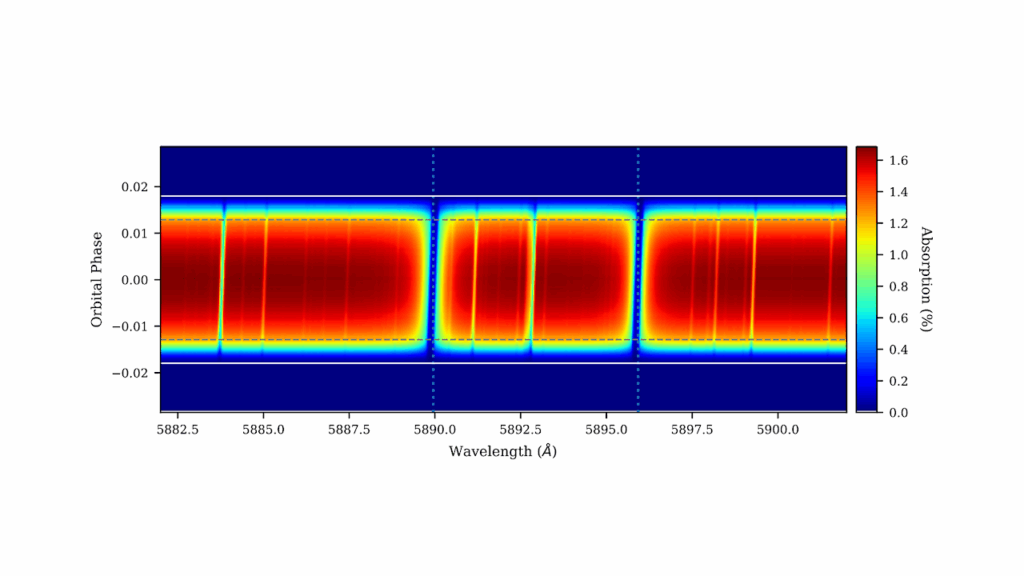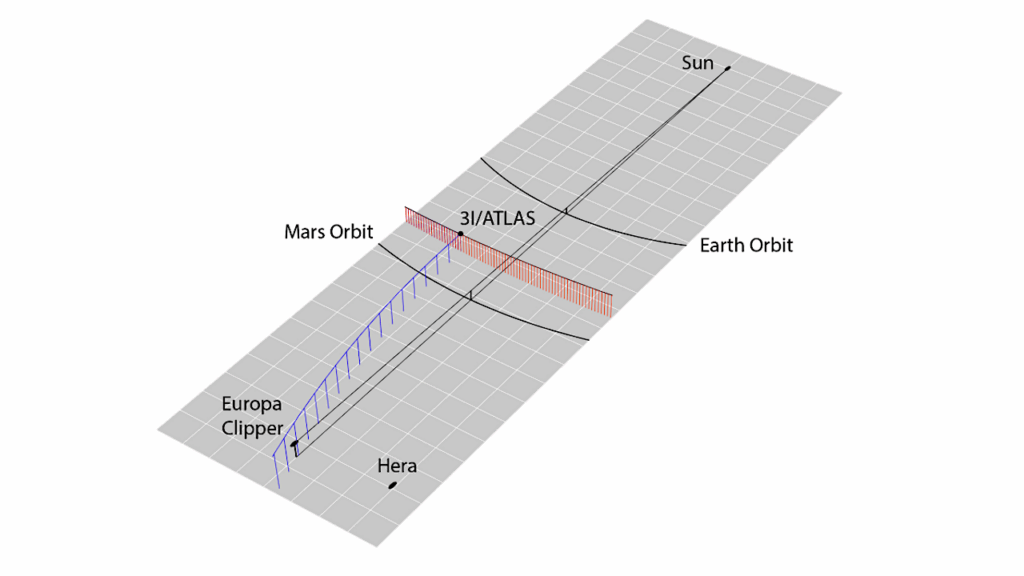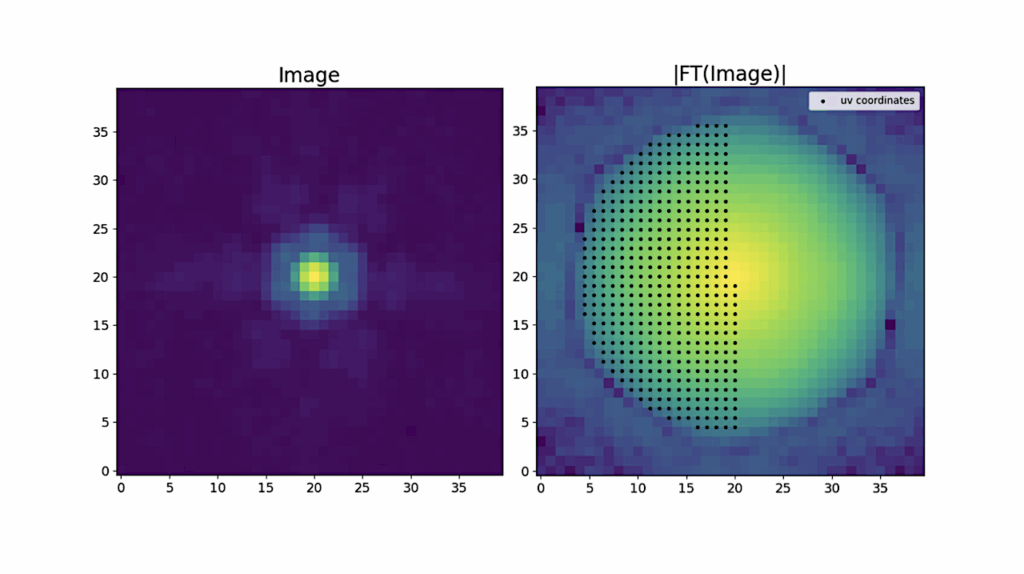Populating The Milky Way: Characterising Planet Demographics by Combining Galaxy Formation Simulations and Planet Population Synthesis Models

Stellar populations and their distribution differ widely across the Galaxy, which is likely to affect planet demographics.
Our local neighbourhood is dominated by young, metal-rich stars in the galactic thin disc, while the stellar halo and galactic bulge host a large fraction of older, metal-poor stars. We study the impact of these variations on planet populations in different regions of the Galaxy by combining a high-resolution galaxy formation simulation with state-of-the-art planet population synthesis models.
We construct a population model to estimate occurrence rates of different planet types, based on the New Generation Planet Population Synthesis by Emsenhuber et al., 2021. We apply this to a simulated Milky Way–Analogue in the HESTIA galaxy formation simulation. We study the planet occurrence rate in the metal-rich regions of the inner Galaxy, i.e. in the galactic bulge and thin disc, and contrast them to the frequencies in the more distant, metal-poor region like the thick disc and stellar halo.
We find that the planet demographics in the metal-poor regions of the Milky Way-Analogue, differ strongly from the planet populations in the more distant, metal-poor regions. The occurrence rate of giant planets (>300M⨁) is 10 to 20 times larger in the thin disc compared to the thick disc, driven by the low amounts of solid material available for planet formation around metal-poor stars. Similarly, low-mass Earth-like planets around Sun-like stars are most abundant in the thick disc, being 1.5 times more frequent than in the thin disc. Moreover, low-mass planets are expected to be abundant throughout the galaxy, from the central regions to the outer halo, due to their formation processes being less dependent on stellar metallicity. The planet populations differ more strongly around Sun-like stars compared to dwarfs with masses 0.3 – 0.5 M⊙.
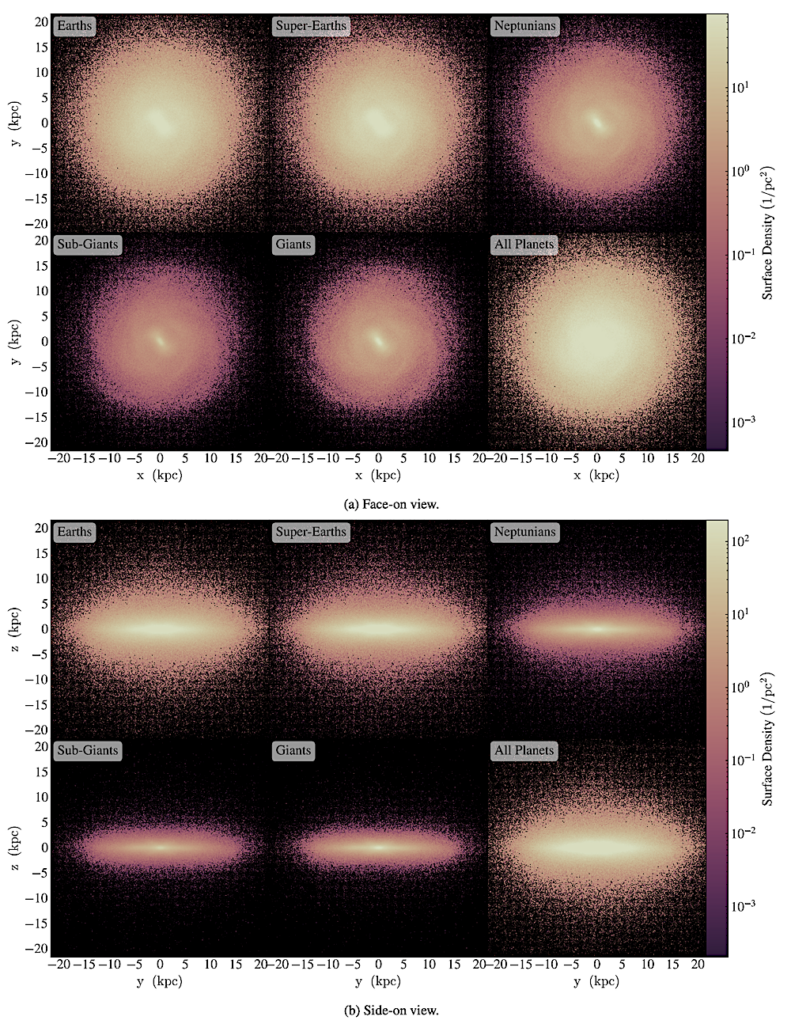
Maps of distribution of planets for each planet Type in the HESTIA Milky Way–Analogue for stars with M‹ “ 1M@. The assignment is based on the NEmbryo “ 50 NGPPS population. — astro-ph.EP
C. Boettner, P. Dayal, M. Trebitsch, N. Libeskind, K. Rice, C. Cockell, B. I. Tieleman
Comments: 19 pages, 13 figures, submitted to A&A. Code available at this https URL
Subjects: Earth and Planetary Astrophysics (astro-ph.EP); Astrophysics of Galaxies (astro-ph.GA); Solar and Stellar Astrophysics (astro-ph.SR)
Cite as: arXiv:2402.08029 [astro-ph.EP] (or arXiv:2402.08029v1 [astro-ph.EP] for this version)
https://doi.org/10.48550/arXiv.2402.08029
Focus to learn more
Submission history
From: Christopher Boettner
[v1] Mon, 12 Feb 2024 19:46:51 UTC (6,531 KB)
https://arxiv.org/abs/2402.08029
Astrobiology


